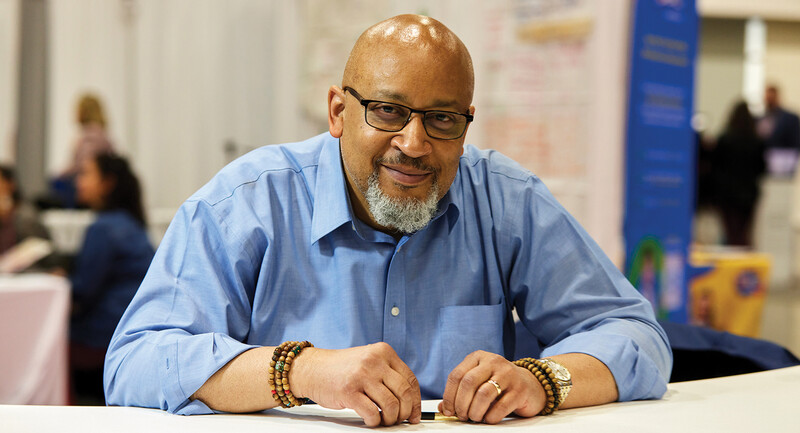March 1, 2023
•
•
Vol. 80•
No. 6Toward Deliberately Distributed Leadership
Credit: JAMESBREY / iSTOCK
When schools shut their doors in March 2020 to avert the spread of COVID-19, the pressure was on to keep student learning going. School and district administrators' attention was consumed by pressing operational matters, such as public health measures, technology procurement, and an expanded range of care for their students' wellbeing. And in many locales, instructional leadership took on a new look.
Where administrators previously assumed primary responsibility for the provision, support, and accountability of curriculum, instruction, and assessment, the pandemic created conditions for teachers, students, family members, community partners, and others to exercise positive new types of influence on teaching and learning.
During the pandemic, I saw many examples of distributed leadership:
Securing resources for instruction. Schools traditionally have top-down decision-making models in which leaders design systems they believe will best provide teachers with what they need to do their work well. During the pandemic, however, teachers who didn't have the information and resources they needed didn't wait for administrators to provide those things but went into problem-solving mode. They used their online networks to find, share, and create resources to meet the instructional and professional learning needs of their teams. I saw teachers move to lesson planning in shared Google Docs to support collaboration with special education and language specialists. I saw them create data systems for real-time tracking and collaboration in support of student wellness. And in cases where teachers were supported by their administrators, such efforts became a major schoolwide asset, not just an individual initiative to benefit a few teachers' classrooms.
Creating home-school partnerships. During remote learning, family engagement also took on all kinds of new forms. Technology leveled the playing field for many families by allowing them to connect from home at flexible times more convenient to work schedules. I saw families connecting during teacher office hours and inviting virtual home visits with teachers, both of which provided opportunities to strengthen relational trust and to collaborate on plans for student success. I also saw increased family engagement in interactive online classroom community forums, IEP meetings, and new virtual town halls designed to solicit parents as partners in brainstorming and problem solving. Where family members' engagement was supported by administrators, such efforts did much more than just inform families—they encouraged their participation as valued community voices.
Fostering a shared vision. Many school communities amplified their presence on social media and the web during the pandemic. Some teachers tweeted stories of students demonstrating the school's core values; others designed classroom webpages that supported conversations about a shared vision of instruction and invited family feedback. At home, families posted school virtues and reinforced reading expectations. Where the support of administrators was in place for these efforts, momentum reached a tipping point and helped all feel shared ownership of the school's vision.
This explosion of creative collaboration in support of stronger teaching and learning begs the question: Why couldn't schools leverage these types of informal leadership more deliberately every day? Leadership happens through interaction. It's worth taking time to review what shifted during the pandemic to unlock these new patterns of interaction among school stakeholders and to reflect on what enduring lessons administrators can apply to amplify the power of distributed leadership in their schools.
During remote learning, many leaders tossed out traditional expectations of the school week. For part of the school day, students were on their own to read, write, create, and explore curricular ideas in their home contexts, providing teachers with increased time for collegial collaboration and connecting with families. Anecdotal evidence from this natural experiment suggests that where leaders also checked in with support to ensure teachers' time could be used well, it was a game changer that empowered teachers and families in fulfilling and impactful ways.
Even though school buildings are now back in business, there's no need to scale back the agency that teachers and families found during remote learning. Principals committed to leveraging stakeholders' potentially powerful influence on teaching and learning must find clever ways to use community partners, strategic staffing, and selective use of substitutes to create and maintain increased time for teachers' ongoing collaboration with colleagues and families.
Technology also became an essential instructional tool during the pandemic. Leaders bent over backwards to provide teachers and families with adequate technology support. They made sure staff and families had the devices and access they needed; communicated a technology plan and guardrails for its use; empowered educators to learn, innovate, and teach others about new tools; helped connect the dots across programs and partnerships to support coherence; and modeled a growth mindset while making their continuous learning visible.
These moves are not just good ideas for pandemics. In fact, they were proposed more than 20 years ago by the International Society for Technology in Education (ISTE) as professional standards for educational leaders. Principals who want to maintain the newfound engagement of stakeholders—or boost it in new ways—will find ISTE resources helpful.
By providing strategic support of informal leadership, administrators with formal authority can amplify the impact of these leaders and make shared leadership contagious.
Leadership is naturally distributed in any system, since anyone can intentionally or unintentionally influence an organization's core work in positive or negative ways. Because leadership is one of the most significant school-based influences on student learning—second only to the quality of teaching—it behooves administrators and other formal leaders to take note of pandemic-related lessons about ways they can nurture more intentional and positive influence, and thereby maximize the impact of distributed leadership.
They should do so, however, with caution. The shifts that happened during COVID-19 didn't just change stakeholders' actions and interactions in schools, but also how they think about what they do. Once innovative teacher-powered systems are in use, teachers begin to see their role differently. Now that teachers are networked, there's no end to the potential of these new bonds. Additionally, families don't want to give up their newfound voice in schools—pandemic or no pandemic. When people are transformed, there's no going back.
End Notes
•
1 International Society for Technology in Education. (2000). ISTE national educational technology standards (NETS). Accessible from https://www.iste.org/iste-standards.









